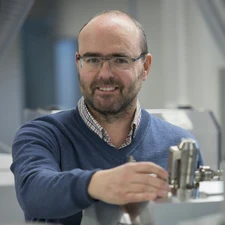D. Graham Pearson

The 2017 Robert Wilhelm Bunsen Medal is awarded to D. Graham Pearson for outstanding contributions to our understanding of the sub-continental mantle, as well as innovations in geochemical techniques.
Graham Pearson has applied cutting-edge trace element and isotopic techniques, many that he has pioneered himself, to constrain a broad range of geological processes. This research has been focused not only on understanding individual geological regions, but also across a wide spectrum of major processes involving crust and lithospheric mantle formation. Pearson’s innovative discoveries include the exhumation of diamond-bearing rocks during formation of the Alps, the first age determination for diamond formation based on dating of single sulphide inclusions, fundamental insights into the origin and evolution of cratons and their mantle roots through time, and the first fully quantitative trace element analyses for gem-quality diamonds applicable to fingerprinting their geographical origin. His breakthrough discovery of a water-bearing ringwoodite inclusion in diamond provided a major stimulus for international research efforts on the distribution of water in Earth’s mantle. Pearson has been a major force in the development of techniques for measuring particularly small samples, often with extremely low concentrations of the elements to be measured. This is crucial in the broad area of mantle research where, for example, one wishes to obtain data from very small inclusions in diamonds and from the diamonds themselves. In approaching major complex topics such as lithosphere evolution, Pearson has long realised the importance of combining evidence from different isotopic systems in order to resolve different aspects of the evolution of the lithosphere over Earth’s history. A hallmark of Pearson’s career has been the ability to develop and employ a research toolkit that ranges from petrography, mineralogy, petrology through stable isotopes, radiogenic isotopes, elements involved in core formation, and spectroscopy. He is an exceptionally well-rounded geochemist/petrologist who is in many ways ahead of his time.
